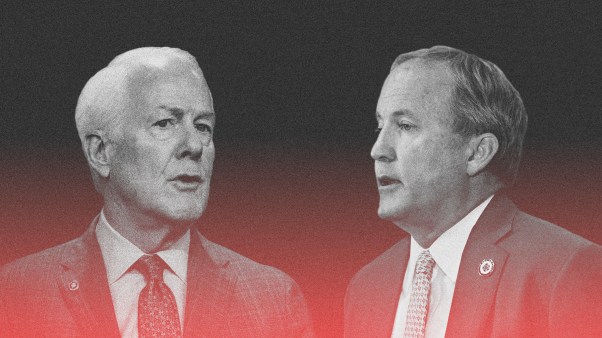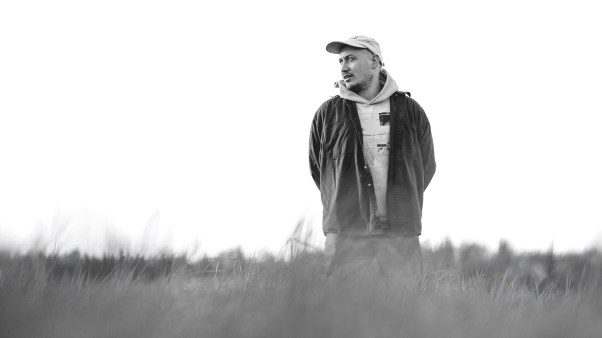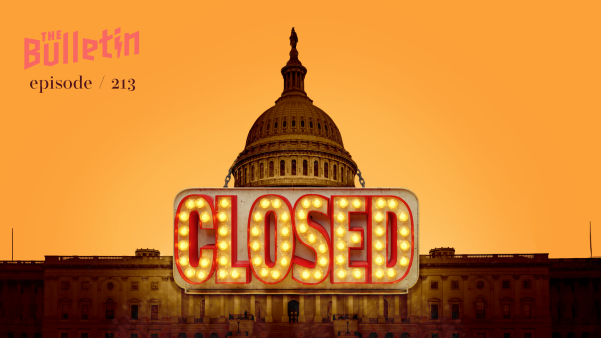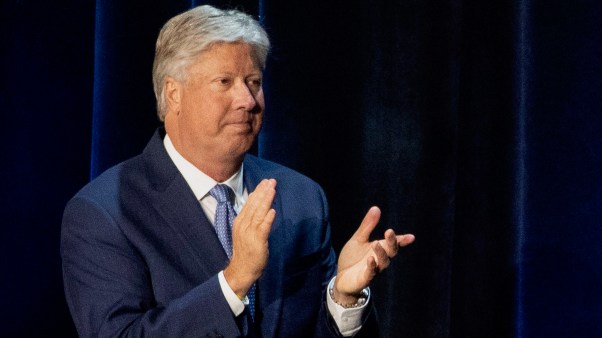Six months ago, a solitary Church of God pastor complained of immoral teachings in a human sexuality course at the denomination’s Anderson (Ind.) College. Further investigation led pastor LeRoy Oesch of Saint Andrews, South Carolina, to a broader charge that the college’s administration and faculty do not adhere to the doctrinal standards of the church.
He listed various allegations in a 37-page letter (dated May 21) to college president Robert Reardon—then mailed copies at his own expense to every pastor listed in the 230,000-member body’s 1980 yearbook.
His efforts hit a raw nerve at the grassroots of this theologically conservative denomination. School administrators defended themselves against criticism. Last June the matter reached the general assembly, which, as is often the case in sticky situations, handed over the matter to a study committee.
While the church kept its controversy from full-blown discussion, the matter held interest across denominational lines. Other church bodies have faced this same question: To what extent must a church-related college reflect and support the doctrines of its sponsoring body?
Last month the special study committee decided that Anderson College does have a responsibility to the Church of God. In a report to the college board of trustees, the committee recommended that the college in its material make clear its “unique relationship” to the Church of God.
While it spoke specifically to questions about the human sexuality course, the committee also addressed the entire academic program. It affirmed that courses should be taught from biblical and Christian perspectives, and that each faculty member should be able to “relate his Christian experience to his or her teaching assignment.”
In turn, the trustees promised to commit themselves to a plan of implementation. A newly appointed seven-member trustees committee will meet on a monthly basis with the college administration to begin implementation of the report. President Reardon, a focal point in the controversy, pledged “constructive responses” to the select committee’s recommendations.
With 2,000 undergraduate students, Anderson College is the largest of five colleges related to the Church of God. (The denomination is usually called the Anderson, Indiana, Church of God to distinguish it from other denominations of the same or similar names.) Local churches give it financial support through the denomination’s voluntary World Service program. Faculty are not required to sign a doctrinal statement, mostly because of long-standing opposition to “creedalism.”
Oesch, who attended Anderson College in 1949–1950 and taught at two other Church of God colleges, said in the past he whole heartedly supported Anderson College. He became disenchanted only last May, when he attended a campus drama club production of “Shenandoah.” Swearing in the dialogue struck him as inappropriate to a Christian college. After voicing this complaint to a student, he was then shown a copy of the sociology department textbook, McCary’s Human Sexuality (D. Van Nostrand Co.), which is used in the human sexuality course then taught by Lavem Norris.
The book’s explicitness appalled him, and he mentioned his disgust in a brief next-day encounter with President Reardon, who told him to see Norris if he had a complaint. Oesch spent 30 minutes with the professor, and was upset by what he heard.
According to Oesch, Norris refuted the traditional biblical stance against homosexuality, and approved masturbation and sexual fantasizing as normal practices.
Oesch says he was refused an appointment with Reardon after the Norris interview, and that he got no support from a denominational editor. He said other pastors told him that for eight years they had written complaint letters to Anderson College officials, but got no response.
So, after conferring with several other South Carolina ministers and some leading Church of God laymen, Oesch decided upon his open letter approach.
To support his charges, Oesch included interviews with, and letters from, Anderson College students, saying that professors teach that premarital and extramarital sexual relations are okay, allow the showing of “stag films” in classrooms, advocate abortion, teach homosexuality as an alternative lifestyle, and advocate masturbation.
(Regarding the hiring of a Mormon and an Indian Sikh as professors of physics and biology, Reardon said in an interview, “I can’t just say he isn’t born again, so I won’t hire him and we won’t offer the course. This is a liberal arts institution; we have to offer certain courses. These people were the best qualified, the best available.”)
After the Oesch mass mailing, a Missouri delegation to the June general assembly announced it would submit a resolution calling for resignations from Reardon, Norris, and Joe Womack of the sociology department. Another such resolution was submitted to the business committee, the processor of resolutions, but was quickly withdrawn before reaching the general assembly floor. A South Carolina resolution asked that church agency and college employees be required to hire only those who affirm the authority of Scripture, but this was tabled.
The college trustees board discussed Oesch’s open letter in a meeting June 23, the day before the general assembly convened, and took the matter under advisement. Board chairman Marvin Baker, in concert with general assembly chairman Paul Hart, was directed to appoint the 10-member select committee to study the controversy and make recommendations.
During the general assembly, the controversy never reached a floor debate, and some delegates complained of a cover-up. President Reardon did read a statement addressing various allegations in Oesch’s open letter. He asserted that the college does not condone practicing homosexuality.
He called “absolute nonsense” a student newspaper report of a colony of homosexuals on campus, and defended the school’s faculty as “highly sensitive to the Christian faith and traditions of the Church of God.” He called the human sexuality book explicit, but not pornographic, and said a “stag film” was shown once in 1975—but that the school faculty repudiated the film, and the “temporary teacher” who showed it was dropped.
Some observers say the human sexuality textbook, despite its explicit pictures, merely discusses both sides of issues. Its general tone and impact will depend on who’s teaching the course, they say.
In its report, the select committee affirmed the place of a human sexuality course at Anderson, but it recommended specific guidelines.
The school is still using the McCary text, but a married couple, not Norris, is now teaching the course. Regarding the homosexuality controversy, Norris said in an interview that homosexuality is “a reality” that “will not go away.” “As Christians we must develop positive programs for facing up to the realities of the issues.… Dealing with the issue openly and honestly in the classroom is one positive approach.” He said “none of this is designed to promote homosexual behavior,” but to provide sufficient understanding for Christians to act responsibly toward “all persons who are feeling deeply about this issue.”
Some school administrators and church leaders have criticized Oesch as ultraconservative. His supporters, however, say Oesch is representative of most Church of God members. They cite his notable credentials, such as immediate past secretary of the general assembly.
Still, some Church of God pastors see the controversy as essentially a dispute between age-old liberal and conservative factions (while pointing out that no one is as “liberal” as those of that label in mainstream groups). They call it ironic that the controversy came in the one-hundredth anniversary of the Church of God Reformation Movement, which was born as an attempt to unite Christians.
Church and Society
Churches in Buffalo Respond to Race Murders with a Rally, Extra Prayer Meetings, and Calls for Reason
“People in our church in Buffalo are scared,” says the Reverend Clara Castro, black pastor of the Bethel Lackawanna African Methodist Episcopal church, “although they are trying to be calm and are praying for an end to the murders and tensions in western New York.” Six recent murders of black men, one only 14 years old, left residents fearful of more violence and racial tension in Buffalo. Four of the murders were by gunshots and the other two were stabbings with the victims’ hearts ripped from their chests.
Castro, a cross-cultural specialist with Inter-Varsity Christian Fellowship, commented in a telephone interview, “Black pastors have prevented lawlessness from springing up all over the area.” Christians are responding well, though it is not easy, she believes.
They were among 25 blacks murdered in seven cities during the past 15 months: 1 f victims, all of them children, in Atlanta alone. (At press time, a man named Joseph Paul Franklin was arrested and charged in connection with some of the slayings.)
Castro has personally experienced difficulties. Her family’s home was pelted with gunfire one night last month. A visiting Inter-Varsity campus minister was sleeping in her son’s room, when it was hit with bullets. Castro feared more violence toward her sons and husband, who leaves for work in the 6 A M. darkness. Many share her fears. A recent TV news survey in Buffalo showed that 60 percent of the city’s blacks fear for their personal safety.
Numerous churches last month modified their schedules and added prayer meetings and special preaching services. These built attenders’ spirits, and helped to control rumors and keep people safe and off the streets. Black pastors spoke on behalf of their community against what appeared to be racially motivated murders. The white religious community responded with a call for community support and unity. Castro, for example, supported a Unity Day rally on Sunday, October 19, on the city square, sponsored by some 150 organizations. Students in her Inter-Varsity chapter at Erie Community College in downtown Buffalo began working on the project at a prerally meeting four days before. Besides a prayer meeting, 35 students put up posters and passed out flyers promoting the rally. They are helping raise money among students for the victims’ families.
The rally drew an estimated 4,000 to 5,000 people and was backed by the Buffalo Council of Churches, Campus Ministry Association of the University of Buffalo, Church Women United, Buffalo Area Metro Ministry, and a host of local denominations and organizations. Most of the organizations are predominantly white, and supported the program in order to show the whites’ concern to preserve racial unity in the city.
JIMMY LOCKLEAR
Unity
Two Largest Presbyterian Bodies Set Merger Schedule
The long-anticipated merger of the nation’s two largest Presbyterian denominations moved a bit closer to reality last month. The Joint Committee on Presbyterian Union arrived at a timetable that would make 1983 the earliest possible date for uniting the Presbyterian Church U.S. and the United Presbyterian Church in the U.S.A.
The committee’s schedule calls for publishing a proposed plan for union in February 1982. Each denomination’s general assembly would vote on the plan that summer. Approval there would result in a 19.82–83 ratification vote among the presbyteries (area governing units) of each body, and then a final, consummating vote by the 1983 PCUS and UPCUSA general assemblies.
Approval at all three stages would result in a single, 3.3-million-member body, tentatively named the Presbyterian Church (U.S.A). Union would bring both existing bodies under the UPCUSA’s Book of Confessions, and a first priority would be preparation of a brief “statement of the Reformed faith for possible inclusion in the Book of Confessions.”
At their meeting last month, union committee members reached agreement on several thorny issues, with others still to be worked out.
The committee retained the controversial United Presbyterian measure requiring election of women to church boards. The proposed language reads: “Every congregation shall elect men and women from among its active members, giving fair representation of all ages and of all ethnic minorities of that congregation, to the office of deacon.…” The committee did provide an exemption plan: a congregation may vote to exempt itself the first year, but its voted exemption from compliance requires the presbytery’s approval in each subsequent year.
For pastors who feel they cannot ordain women officers and ministers, the committee promises to give “freedom of conscience with respect to the interpretation of Scripture.” However, the committee also says the pastor’s conscience is “captive to the Word of God as interpreted in the standards of the church.…” It would be up to “the governing body” to judge whether a pastor, by refusing to ordain women, “has departed from essentials of the Reformed faith and polity.”
The committee is discussing provisions by which PCUS congregations could withdraw with their property after the union. United Presbyterian churches were not given that option, in deference to the denomination’s work toward a constitutional amendment making specific its claim to ownership of local church property.
The union committee, which was organized about 12 years ago, has achieved rocky progress at best.
Both denominations in recent years have experienced schisms and congregational withdrawals led by conservatives, and some observers see hastened efforts toward union as retrenchment and a means of shoring up losses. At the same time, certain evangelical renewal groups back the union efforts, thinking (and lobbying) that the single body will be more sympathetic and supportive of the evangelical viewpoint.
Philosophy
New Humanist Declaration Hits ‘Authoritarian’ Religion
In books, speeches, and papers, the New Right lobbies and many evangelicals are attacking a rise of secular humanism. Some prominent secular humanists recently issued a statement defending their position, and took the opportunity to fire their own blast at critics in “anti-secularist quarters,” including “fundamentalist, literalist, and doctrinaire Christianity.”
The statement, “A Secular Humanist Declaration,” appears in the first issue of the new magazine, Free Inquiry. Edited by philosophy professor Paul Kurtz of the State University of New York at Buffalo, the magazine is dedicated to secular humanist thought. Kurtz drafted the statement, and its 58 signers, who “support its general purposes and direction,” include science fiction author Isaac Asimov, “situation ethics” theologian Joseph Fletcher, psychologist B. F. Skinner, novelist Robert Rimmer, Mrs. Bertrand Russell, philosopher A. J. Ayer, and a number of foreign spokesmen.
The statement begins by extolling the historic roots of humanist thought, from classical Greece up through the Renaissance. It later notes, “Secular humanism places trust in human intelligence rather than in divine guidance.”
In their declaration, the humanists categorically reject the divinity of Christ, see no divine purpose in the universe, doubt traditional concepts of God, and warn that dogmatic religion is threatening intellectual freedom.
The document links “fundamentalist, literalist and doctrinaire” Christianity, Moslem clericalism in the Mideast, and the reassertion of papal authority by Pope John Paul II. It says these developments follow in the wake of earlier “messianic and totalitarian quasi-religious movements such as fascism and communism.”
Television
‘Cosmos’ Series Criticized for Its Philosophical View
“Cosmos,” the 13-part public television series that features Cornell University astronomer Carl Sagan’s views on “the mysteries of space and the planet earth,” drew one of the largest audiences in the history of the Public Broadcasting Service when it began in September. According to Nielsen ratings from New York, Chicago, Los Angeles, and San Francisco, the first program was watched in 9.5 percent of homes where television sets were on. The PBS record is held by “Death of a Princess” (about a member of the Saudi Arabian royal family), which earned a 17.9 percent rating.
However, “Cosmos” took its licks from at least one member of the academic community. Writing in the Wall Street Journal, Richard Baer, Jr., who teaches at the New York State College of Agriculture and Life Sciences, protested that Sagan is not simply presenting science. “He is also sharing his philosophical world view, his religious testimony—a blend of nature mysticism, materialism, and scientism,” said Baer.
Baer was irked because he believes Sagan’s world view looks to “science alone … to unravel the mysteries of life.” He also objected to Sagan’s “sarcastic voice” as it revealed “his bias against religion and the church.” “For Mr. Sagan, the church appears to be little more than the realm of ignorance and bigotry,” he wrote.
Woreld Scene
Ugandan soldiers were holding seven Africa Inland Mission missionaries prisoner last month in their hospital station in the West Nile District. Reasons for the action remained unclear. However, AIM officials suspect the missionaries got caught in military actions by the Ugandan army against ex-dictator Idi Amin’s loyalists who recently invaded the region. The missionaries, reportedly unharmed, included five British, one Australian, and one American (translator Lora Belle Barr of Philadelphia). AIM petitioned the Ugandan government for their release through U.S., British, and Australian embassy officials.
TV evangelist Rex Humbard got the Chilean government’s support for a series of mass crusades there in February. Humbard met last month in Santiago with President Augusto Pinochet, who extended a personal invitation to Humbard; the announced meetings netted wide coverage in the nation’s news media. Humbard drew a crowd of 85,000 to a 1978 crusade meeting in Santiago, and his one-hour syndicated program airs on about 80 broadcast outlets in this largely Roman Catholic country.
Britain’s planned “Decade of Evangelism” was launched in Nottingham last month, as 800 delegates met for the first assembly of the Nationwide Initiative in Evangelism. The NIE is a cooperative venture of Anglicans, the Free Churches, and Roman Catholics, to stir up Christians’ concern for their local communities and bring the gospel to every person in Britain by the year 2000. Coordinator Tom Houston, director of the British and Foreign Bible Society, called for all denominations to put “more people, money, and programs into their evangelism” and to keep in touch with one another.
A priest was battered to death for holding a religious service in an Albanian prison camp, according to word reaching the Slav Missionary Society in Stockholm. A traveler, who refused to be identified, said the Roman Catholic bishop, Coba, frequently visited prison camps in the tiny Communist country. This was the first reported death of a clergyman in Albania since 1973, when a Catholic priest was killed for baptizing the child of a fellow prisoner. Albania remains virtually a closed society, with little access allowed foreigners except for those on strictly supervised package tours.
The one-year-old European Evangelical Accrediting Association recently added three more schools to its membership. That brings the number of its Bible institutes and seminaries to 26 in seven countries. Member schools must have at least a two-year program, undergo a formal self-evaluation, and complete a three-year probationary period before receiving full accreditation.










